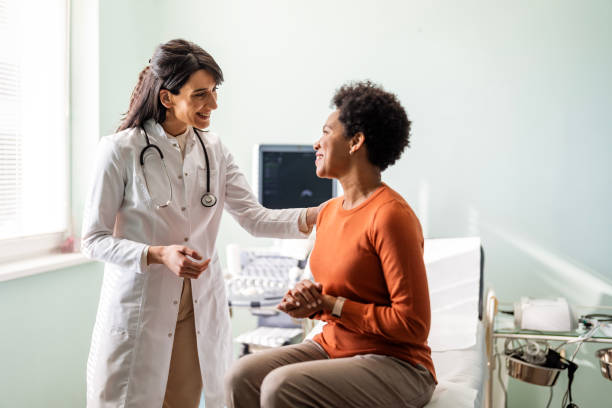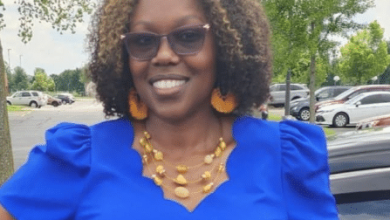Is Your Doctor Missing the Signs?


Uterine fibroids are a significant health issue affecting many women, particularly Black women, who are three times more likely to develop fibroids than white women. Additionally, 80 percent of Black women will develop fibroids by the age of 50. According to USA Fibroids Centers, the longer fibroids go undiagnosed and untreated, the more likely they are to cause more issues like unmanageable periods, infertility, or an increased rate of maternal mortality.
Understanding Uterine Fibroids
Uterine fibroids are non-cancerous growths that develop in and around the uterus. These growths, also known as fibroid tumors, can vary in size and number. While they are not malignant (cancerous), they can cause significant health problems when symptomatic.
Fibroids can lead to a range of health issues, including:
- Heavy menstrual bleeding: Excessive bleeding during periods is a common symptom.
- Pain and cramping: Severe pain during menstruation or sexual intercourse can occur.
- Anemia: Chronic heavy bleeding can lead to a deficiency of iron in the blood.
- Fertility issues: Large fibroids can interfere with pregnancy, causing difficulties in conceiving or maintaining a pregnancy.
Common Symptoms
Many women experience symptoms that are often dismissed as typical menstrual issues. However, certain signs should not be ignored:
- Extremely heavy periods: Going through multiple pads or tampons in a short time is not normal.
- Severe menstrual cramps: Pain that disrupts daily activities is a concern.
- Anemia: Symptoms include fatigue, weakness, and shortness of breath.
- Pelvic pain: Persistent pain in the pelvic area outside of menstrual cycles.
- Frequent urination: Large fibroids can press on the bladder.
“If the pain is severe enough to stop you from performing daily activities, you need to let your physician know. Too many of us suffer in silence. Most women have uterine fibroids, and while we don’t fully understand why, we know that Black women tend to have them more frequently and with more severe symptoms. There’s a lack of high-quality research on this, which is part of why we have Uterine Fibroids Awareness Month—to raise awareness and push for more understanding and better care,” Linda Goler Blount, president of the Black Women’s Health Imperative, tells BlackDoctor.org.
RELATED: Fibroids and Fertility: What Every Black Woman Needs to Know
Lack of Awareness and Discussion
Despite their prevalence, fibroids are rarely discussed in medical settings or communities. Several factors contribute to this silence:
- Insufficient training: Some healthcare providers may not be adequately trained to identify and treat fibroids.
- Limited treatment options: Current treatments include myomectomy (removal of fibroids) and hysterectomy (removal of the uterus), both of which have significant implications.
- Social and cultural factors: Many women, particularly in communities of color, may not feel empowered to discuss their symptoms.
“For many women, fibroids are asymptomatic and don’t cause problems. For those who do have symptoms, there aren’t many options besides myomectomy or hysterectomy. If you still plan to have children, a hysterectomy isn’t ideal. Even if you don’t want children, a hysterectomy can cause menopause, which has its own issues. From a health policy perspective, doctors might avoid screening for fibroids if they don’t have effective treatments to offer,” Blount adds.
Improving Dialogue and Awareness
Raising awareness and improving dialogue about fibroids is crucial. Here are some steps that can be taken:
Patient Advocacy
You should feel empowered to ask your doctors about fibroids and request thorough examinations.
“The most important message is not to suffer in silence. Heavy periods and debilitating cramps are not just part of being a woman. Talk to your provider and ask to see the notes they write about you. This transparency can improve the care you receive. Also, let your representatives know that research into uterine fibroids and women’s health should be a priority. We need to advocate for ourselves and ensure we receive the best care possible,” Blount advises.
“From the Black Women’s Health Imperative perspective, we partner with other organizations to raise awareness and advocate for change. Every person with a uterus should ask their physician about fibroids. This prompts doctors to check and discuss symptoms and potential treatments. Additionally, we need more research and better policy. There have been legislative efforts like the Stephanie Tubbs Jones Uterine Fibroid Research and Education Act, but they haven’t passed yet. Effective policy would ensure standard care and promote research to understand and treat fibroids better,” Blount notes.
Recent studies suggest a link between experiences of racism and the development of fibroids. Understanding these social determinants is crucial for developing comprehensive treatment approaches.
Advocacy groups like the Black Women’s Health Imperative and the White Dress Project, which recently awarded Blount for her advocacy work in fibroids, play a significant role in raising awareness and pushing for research and policy changes.
“While we don’t know exactly what causes fibroids, studies like the Black Women’s Health Study have found links between experiences of racism and fibroid tumors. This shows it’s not just biology but also social factors. Tissue banks are another area for improvement. Researchers need access to fibroid tissue samples to study, but currently, there’s very little representation of Black women’s fibroids in these banks. Legislative efforts could require doctors to send biopsy samples to tissue banks, making research more inclusive,” Blount shares.
If you need further assistance advocating for yourself at the doctor’s office, Blount suggests taking someone with you to appointments. “Two pairs of ears are better than one. Listen carefully to what the doctor and nurse say,” Blount concludes.




